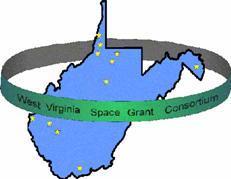Fourth Grade Introduction
On September 6, 2006 Mrs. Withers' fourth grade Talented and Gifted class had the opportunity to interact with the LEGO Simple Machine sets. Each two child group was given the task of constructing one of the projects suggested by the included building guides within an hour. A few of the students had previous experience with the First Lego League and using the LEGO Simple Machine sets, so they were quite comfortable with the task they were given. The majority of the class had experience playing with regular LEGO building block sets but had never been given the opportunity to build something such as a motorized car or a turnstile. Needless to say, the class as a whole was excited about the experience they had.
Each group chose to construct a different project out of the ten given instruction booklets, with the exception of two groups who both decided to construct the race car. One group decided to construct a turnstile which was powered by a small hand crank on the side. The group finished their project with time to spare and was curious if they could attach the provided motor to run their turnstile. The children were encouraged to explore their curiosity and were given the opportunity to attempt to attach a motor to the turnstile. The group's first try was unsuccessful; the point at which they placed the motor provided insufficient power to turn the gears and operate the machine. The two students persisted in trying to attach their motor at different positions in the system until they not only got their turnstile to run with the motor but it moved at a considerable speed.
Not all the groups had such an easy time constructing their devices as did the group with the turnstile. Most of the students ran into small problems along the way, such as getting stuck on one step because they had misplaced a piece in a previous step, and required a little bit of assistance, which is a good thing. The children were given the opportunity to try on their own and when something didn't turn work as anticipated, they were forced to reassess their situation and discover what went wrong. At no point did the children have someone else (i.e. an adult or teacher) construct the device for them, so it was purely a small group effort with the kids to do their own problem solving.
The activity that day was wholly satisfying for the children.
They got to spend an hour of class time playing with LEGO building sets
in their opinion. The children were using LEGO building sets, but
they were doing far more than just playing. They were all engaged
in a group activity and worked well with another student whom they had
only met the week prior. The students were using their skills to
follow instructions given and, when necessary, do their own problem solving.
Everyone involved had an enjoyable experience and at the end of the hour
the groups could not wait to show off what they had constructed and how,
with LEGO building sets, they had created a complex system of gears, rods
and pulleys that actually worked - and they had done it all by themselves
with a simple set of instructions.
|
With support from NASA West Virginia Space Grant Consortium. 
and 
|